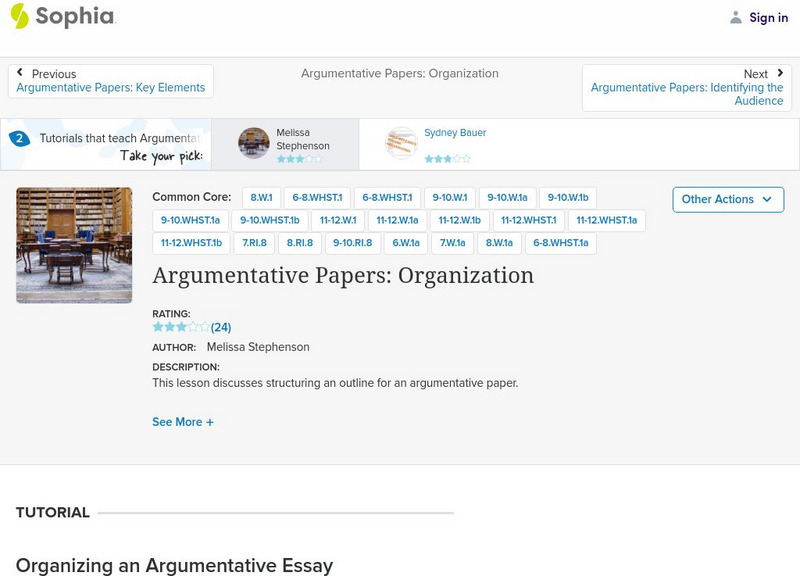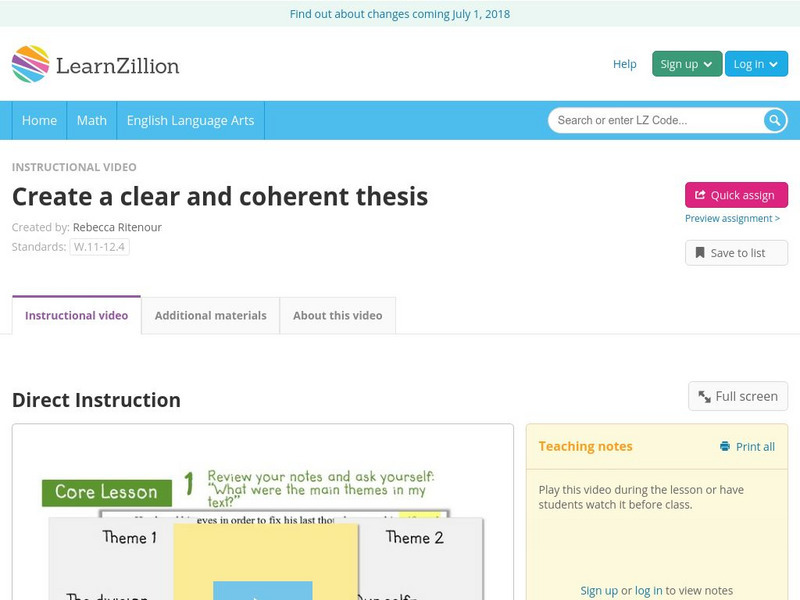Hi, what do you want to do?
PBS
Career Connections | Public Relations Specialist
Imagine promoting various products—developing ad campaigns that create the buzz needed to attract customers for these products. Such is the job of public relations specialists. Find out what is involved by viewing a short video about...
PBS
Documenting the Dust Bowl
Paul Taylor's interviews and Dorothea Lange's photographs bring to life the unimaginable devastation of the Dust Bowl. After watching a short video from PBS, viewers are asked to imagine how they would react, whether they would stay or...
TED-Ed
The Myth of Hercules: 12 Labors in 8-bits
Hercules had to slay a lion, capture a bull, and steal a herd of cattle from a three-headed giant, and he was just getting started. Scholars watch an inventive animated video that uses a video game format to describe the 12 labors of...
TED-Ed
Zen KōAns: Unsolvable Enigmas Designed to Break Your Brain
Why do people attempt to explain the unexplainable? Scholars explore the topic by learning about ancient philosophical thought experiements known as kōans. After watching a brief yet informative video, pupils answer questions and engage...
TED-Ed
Why Should You Read "One Hundred Years of Solitude"?
How does One Hundred Years of Solitude by Gabriel García Márquez represent the genre of magical realism? Scholars explore the topic by watching an informative video. Next, they answer quiz questions and join an online...
University of North Carolina
Understanding Assignments
In high school and college, most writing assignments go beyond simple questions such as "What is your favorite moment from childhood?" To help writers understand complex writing assignments, a short video from a larger series offers a...
University of North Carolina
Comparing/Contrasting
Comparing and contrasting goes beyond beyond obvious differences—it includes critical thinking skills, too! Through a short video, writers learn how to organize ideas within a compare/contrast paper. The video highlights different styles...
Sophia Learning
Sophia: Determining Your Audience
A series of four screencasts explaining the importance of audience. Students learn the difference between the real audience and the audience the writer intends, how to create a specific audience instead of a general audience, how the...
Sophia Learning
Sophia: General and Specific Audiences
This video lesson focuses on analyzing your audience and tailoring your writing to it. It discusses the 4 types of audiences: real, intended, general, and specific; it explains how to choose writing styles such as tone, vocabulary, and...
Sophia Learning
Sophia: Organizing Your Paper
This tutorial focuses on organizing a paper. It provides three videos: the first video covers graphic organizers and how each is best used; the second one discusses the purpose, audience, and context of the writing and offers 5 methods...
Sophia Learning
Sophia: Anticipating and Responding to Readers' Questions
This tutorial focuses on audiences and anticipating and responding to their questions using 2 videos. The first video focuses on determining, defining, and discussing real, intended, general, and specific audiences and also audience...
Sophia Learning
Sophia: Argumentative Writing: Identifying the Audience
This lesson focuses on identifying and considering your audience in argumentative writing. It discusses the real vs. the intended audience, general and specific audiences, and the target audience. It suggest that you consider your...
Sophia Learning
Sophia: Argumentative Papers: Organization
This lesson focuses on the organization of argumentative papers. It discusses the purpose of argumentative papers and the required parts; then it provides the basic organizational pattern for the paper: introduction with a hook for the...
Sophia Learning
Sophia: Clarity
A video lesson explaining the importance of clarity in effective writing and showing some examples of how to make writing more clear. [9:45] W.11-12.4 Clear/Coherent Writing CCSS.ELA-Literacy.WHST.6-8.2.c and CCSS.ELA-Literacy.WHST.6-8.4
Sophia Learning
Sophia: Concise Language: Avoiding Redundancy
This screencast offers several methods to help readers spot and fix redundancy in their writing. She discusses why concise writing is important, and specific ways to edit for a more expressive, concise text. Includes short quiz. [3:32]
Imagine Learning Classroom
Learn Zillion: Create a Clear and Coherent Thesis
In this lesson, you will learn how to create a clear and coherent thesis statement by analyzing the task and reviewing the text. [7:00]
Sophia Learning
Sophia: Audience and Writing Style
A screencast lesson defining different types of audience, discussing the importance of determining an audience, and explaining how a writing style should be chosen based on the needs and expectations of the intended audience.[5:18]...
Other
Write to Top: Cohesion and Coherence
This video explains what cohesion and coherence are. The instructor explains ways to incorporate cohesion into essays. [22:46]
Sophia Learning
Sophia: Writing for an Audience
This lesson introduces the concept of writing for an audience. [7:18]























